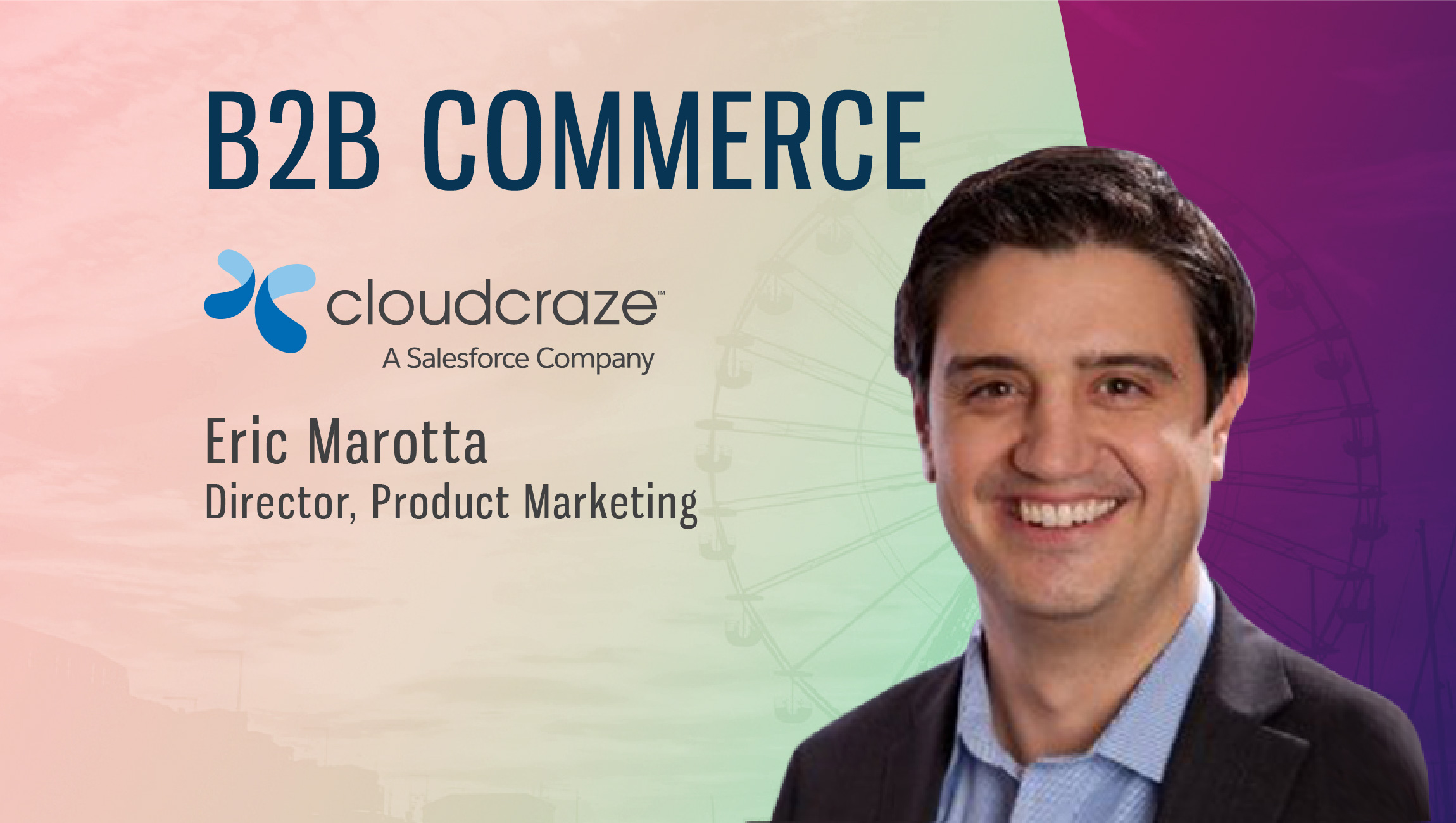[/vc_wp_text]
Tell us about your role and how you got here. What’s the most exciting part about Crimson Hexagon’s workplace?
Before I came to Crimson Hexagon, I was CMO at Attivio, a cognitive search and insight platform, which also uses natural language processing and AI to help companies make sense of unstructured text. For me, the most exciting part of Crimson’s workplace is all the work we’re doing to help companies better understand their customers. Blending social media data with public data and with enterprise-held data to uncover consumer trends is a new market opportunity so there’s a lot for everyone here to learn, and I love that. I get excited about this because our mission, to help brands understand their customers, isn’t something that just the marketing team or just the product team cares about — every department within Crimson is focused on this. The appetite for innovation here is large, which helps keep excitement high throughout the organization.
What are the core values of Crimson Hexagon’s marketing approach? How are they different from the other contemporary martech platforms?
The beating heart of Crimson Hexagon is its ability to help companies better understand their consumers — who they are, what they care about, how they view your brand and so much more. This breadth and level of customization is what makes Crimson different from other martech platforms, which are often designed to help automate specific tasks, measure engagement or consolidate reporting. While Crimson can certainly help in this regard, its core value is really about providing deep, actionable consumer insights. The other thing that really sets Crimson apart from other martech platforms is the dataset it comes pre-loaded with: trillions of online conversations, including all of Twitter since 2010, huge amounts of Instagram and Reddit data, and a lot more; it’s all instantly accessible from the platform.
How would CMOs benefit from paying more attention to their social media monitoring and automation tools in 2018?
The short answer is to go beyond social media monitoring and automation. If you’re not automating social posting and carefully tracking social engagement, definitely start there. But we find that the true value of social media for CMOs is not about engagement and automation, but about the level and types of insights that you’re extracting from social media data. I just read a great article from a Forrester analyst that made this point really clear: social media data isn’t just about measuring engagement, it’s about better understanding your consumers and their preferences. Now that it’s 2018 and social media has been around for over a decade, it’s time for CMOs to start to think bigger about how they leverage social media data and how they can get a more complete portrait of their target audience if they combine social with other data sets. After all, social is a crucial lens into consumer behaviors and desires, but it’s only one piece of the puzzle. The true value of social data is when its combined with other data sets.
How do you see AR/VR technologies making a bigger impact on the B2B social media campaigns?
AR/VR have been hot topics on the marketing scene for a while, and it certainly seems like they’re going to play a larger and larger role on social as well. While there will be some specific changes due to AR/VR, I think they are part of a larger trend we’ve been seeing for a while — the increasingly multi-media nature of social media. A few years ago, social media was dominated by text, but recently we’ve seen an explosion of images and videos. AR is an extension of that same trend line. As always, we expect that these trends — which have been largely consumer-driven — will be adopted by brands as well.
We use a lot of different technologies, at different points in the marketing funnel. Everything runs through Marketo, naturally, but we’re supplementing that with data from other sources like DemandBase (for account-specific messaging), Bizible (for marketing attribution), On24 for event management. We’re bringing on a few other tools, but just these represent a significant commitment to optimize the journey of our target audiences.
Would you tell us about your standout customer success/digital transformation story at Crimson Hexagon?
We’ve been consistently moving upmarket for the last several years, and recently we’ve seen that work really come to fruition. The first step was making sure that — in terms of our digital presence, the content we produce, and how we communicate ourselves during the sales process — we are speaking the same language as the big brands we are trying to engage. This took a practiced approach to testing and learning. We spent a lot of time talking to large global brands and thinking about their business objectives through their own lenses. This changed the way we produce content and target new prospects. Now we’ve seen that we’re having a lot more success in the very top of the market. We’ve hugely expanded our biggest contracts, and have successfully brought on some of the most recognizable companies on the planet.
Of course, we know that deals at this level are appreciably different from deals with smaller companies, so we’ve been diligent about recording feedback and measuring the right things. We know, for example, that these deals have longer sales cycles and involve many more considerations that are not always present in smaller deals. To support this from a marketing perspective, we’re working to create content and campaigns that are most effective at each stage of the sales process for each targeted audience.
How do you prepare for an AI-centric world as a marketing leader? How do you leverage AI capabilities at Crimson Hexagon?
The most important way we use AI at Crimson Hexagon is within our own product, which leverages AI and machine learning in a few ways. First, it allows us to create the exact content we want, which wouldn’t be possible without machine learning. One of our main marketing goals is to show (not tell) customers how our product would help them better understand their audience, campaigns and brand perception. To do this, we often run analyses on big brands that we know would be a good fit for our product. Machine learning allows us to create the most customized content by training our algorithm to surface and categorize the social posts that are most relevant to specific brands or industries. So, for example, we can compare consumer conversations about Roku vs. Apple TV, but in terms of what those companies would actually care about: how people decide to purchase one over the other. This is not something we could do without using AI to “learn” how to sort posts the way we want.
The other way we’re starting to use AI for marketing purposes is through AI-powered alerts. We sell to a lot of industries, so it’s important for us to know what’s trending within those industries. We keep up with the news, of course, but AI-powered alerts help us stay on top of breaking news and conversations that are likely to grow so that we can keep our finger on the pulse of all the industries we care about.
How do you bring people and technology together at Crimson Hexagon?
This is a great question because it’s actually central to how our platform works. One of the main reasons Crimson Hexagon exists is because it allows brands to analyze consumer conversations on a scale that wouldn’t be possible without AI. Imagine trying to analyze every mention of Coca-Cola! That obviously isn’t possible without a lot of the heavy lifting being done by the algorithm. But the inverse is true as well — the Crimson platform relies on human training because those insights and critical thinking are essential for effective analysis and sorting. That’s why we call this part of the platform “human-assisted machine learning” — it is the perfect confluence of people and technology.
What apps/software/tools can’t you live without?
My phone. Like a good friend, it’s always at the ready and raring to go. It’s a powerhouse of productivity, enabling me to stay connected to all and everything. Phones are so ubiquitous they’re kinda underrated now – unless you misplace it!
What’s your smartest work-related shortcut or productivity hack?
It’s simple: I’m up early every day. This allows me to pack more in my day. I start work (often on my phone) before most are awake and go for a morning run to exercise my body and clear my head. By the time I hit the office in person, I’ve already accomplished quite a bit so I can start focusing on more strategic matters that require interactions with others.
What are you currently reading? (What do you read, and how do you consume information?)
I just finished David Yergin’s, The Prize: The Epic Quest for Oil, Money, and Power. Next up is Jeff Goodell’s, The Water Will Come: Rising Seas, Sinking Cities, and the Remaking of the Civilized World. After that, it’s Byron Sharp’s, How Brands Grow: What Marketers Don’t Know. Next, it’s Matthew Bruccoli’s, Some Sort of Epic Grandeur: The Life of F. Scott Fitzgerald
What’s the best advice you’ve ever received?
“Trust Your Gut.” It wasn’t advice explicitly given to me, but rather what I’ve learned over time and, notably, construed by reading Alfred Lansing’s, Endurance: Shackelton’s Incredible Adventure. The story is non-fiction, but is so remarkable that if it didn’t already happen, I’d say it couldn’t; it’s simply that unbelievable. To choose his shipmates – people he would literally risk life and limb with – Shackelton put an ad in a London paper, offering to interview anyone who might want to accompany him on his journey to explore the South Pole by crossing it by dog sled. He interviewed each respondent in person for just fifteen minutes. He suffered through the unimaginable and, somehow, he and every one of his men survived.
Tag the one person in the industry whose answers to these questions you would love to read:
Thank you Lou! That was fun and hope to see you back on MarTech Series soon.
Lou Jordano is chief marketing officer at Crimson Hexagon, bringing more than 20 years of experience building and leading high-impact teams within global enterprises and high-growth startups. Prior to Crimson Hexagon, Lou served as the CMO for Attivio, a privately held cognitive search and insight platform company. Previously, Lou was the CMO at Ektron, now Episerver, and held leadership positions at TIBCO Software and EMC, now Dell. Lou holds a Master of Arts from Hofstra University and a Bachelor of Arts from Holy Cross.

Crimson Hexagon helps global brands better understand their consumers. With instant access to the world’s largest volume of unstructured text and images across social, online public, and enterprise-held data sources, Crimson Hexagon’s AI-powered consumer insights platform allows clients to analyze audiences, track brand perception and campaign performance, and even detect competitive and market trends. Our clients include Anheuser-Busch InBev, Adidas, General Mills, Paramount Pictures, Starbucks, and Twitter.
The MTS Martech Interview Series is a fun Q&A style chat which we really enjoy doing with martech leaders. With inspiration from Lifehacker’s How I work interviews, the MarTech Series Interviews follows a two part format On Marketing Technology, and This Is How I Work. The format was chosen because when we decided to start an interview series with the biggest and brightest minds in martech – we wanted to get insight into two areas … one – their ideas on marketing tech and two – insights into the philosophy and methods that make these leaders tick.











